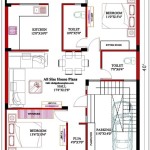House Plumbing Plans: Essential Guide to Planning Your Plumbing System
Whether you're building a new home or renovating an existing one, creating a plumbing plan is crucial for a well-functioning and efficient plumbing system. A well-designed plumbing plan ensures proper water distribution, drainage, and waste removal, enhancing the comfort and safety of your home. Here's a comprehensive guide to the essential aspects of house plumbing plans:
1. Understanding the Scope of Work
Begin by defining the scope of your plumbing project. Determine the number of fixtures, appliances, and water sources that need to be connected. Consider future additions or renovations to ensure the system can accommodate these changes.
2. Selecting Fixtures and Appliances
Choose plumbing fixtures and appliances that meet your specific requirements and preferences. Consider their water consumption, flow rates, and aesthetic appeal. Select appliances that are WaterSense certified to save water.
3. Planning Water and Drain Lines
Water lines carry clean water from the water source to the fixtures and appliances. Plan their size and routing to provide adequate water flow. Drain lines remove wastewater and must be sized to handle the volume of water generated.
4. Venting the System
Plumbing vents allow air to escape from the drain lines, preventing backflow and foul odor. Plan the location and size of vents to ensure proper ventilation.
5. Sizing Pipes
The diameter of the pipes should be sufficient to handle the water flow required by the fixtures and appliances. Improper pipe sizing can lead to low water pressure or slow drainage.
6. Selecting Materials
Common plumbing materials include copper, PVC, and PEX. Each material has its advantages and disadvantages. Consider factors such as cost, durability, and corrosion resistance.
7. Drainage System
Design a drainage system that effectively removes wastewater from the home. Plan for proper slopes and cleanouts to prevent clogs and ensure smooth drainage.
8. Water Heating System
Determine the type and size of water heater required to meet the hot water demand of your household. Consider energy-efficient options to save energy costs.
9. Plumbing Code Compliance
All plumbing plans must adhere to local building codes. These codes ensure the safety and functionality of the plumbing system. Refer to the International Plumbing Code (IPC) or your local building codes for specific requirements.
10. Professional Installation
Proper installation is key to ensuring a reliable and efficient plumbing system. Hire licensed and experienced plumbers to execute the plan accurately. Permits may be required for certain plumbing work in your area.
Conclusion
A well-designed and executed plumbing plan is essential for a comfortable and safe home. By following these essential aspects, you can create a plumbing system that meets your needs and enhances the overall functionality of your property.

How To Create A Residential Plumbing Plan And Piping Plans House Drawing Drawings

Plumbing Plans Example Layout Plan Floor

How Your Plumbing System Works Harris

How Your Plumbing System Works Harris

How To Create A Residential Plumbing Plan And Piping Plans House Drawing Drawings

Home Plumbing Diagram Out Of This World

Types Of Plumbing House System Diagram

30 X40 Residential House Plan Dwg File Cadbull Plumbing Layout Plans Hotel Floor

Bathrooms Basics 6 Tips To Plan Your Bathroom Plumbing And Layout Archdaily

Building Plumbing Plans Images Browse 4 418 Stock Photos Vectors And Adobe
Related Posts








